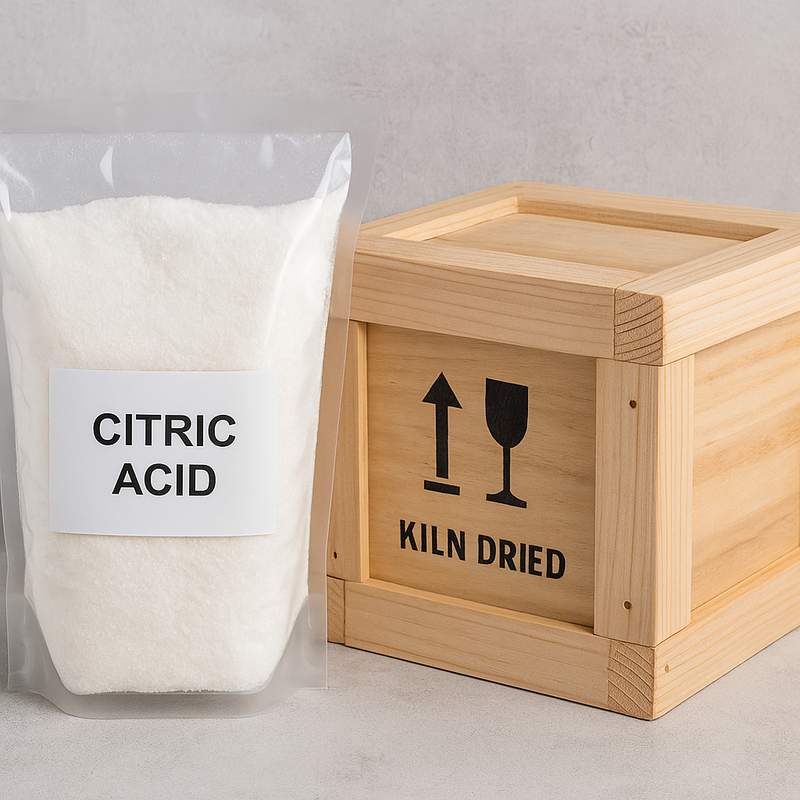The transportation of food additives—ranging from preservatives and sweeteners to colorants and emulsifiers—is a critical but often underestimated part of the global food supply chain. These additives play a pivotal role in modern food manufacturing, but their safe and efficient delivery is not without challenges. For food additive manufacturers, distributors, logistics providers, and end users such as food processors and beverage factories, understanding the risks and establishing robust solutions is essential to ensuring quality, compliance, and customer satisfaction.
Whether you’re transporting powdered antioxidants, liquid acidulants, or temperature-sensitive enzymes, this guide offers actionable insights to strengthen your operations.
The Importance of Safe Additive Transport
Food additives are substances that must meet strict purity and safety standards. Improper handling or transit conditions can compromise their stability, alter their chemical composition, or even render them unsafe for human consumption. Moreover, regulatory frameworks such as FDA (USA), EFSA (EU), and GB (China) require that food additives are transported in ways that prevent contamination, degradation, or mislabeling.
Therefore, effective transportation isn’t just about logistics—it’s a matter of quality assurance, compliance, and brand reputation.

Common Problems in the Transportation of Food Additives
Temperature Sensitivity
Many food additives—such as enzymes, probiotics, certain vitamins, and emulsifiers—are temperature-sensitive. Exposure to excessive heat or cold can:
- Degrade bioactivity (e.g., in enzymes)
- Cause clumping in hygroscopic powders
- Lead to phase separation in emulsions
- Change the color or flavor profile
Moisture and Humidity Exposure
Additives like citric acid, ascorbic acid, sorbates, and starches are highly hygroscopic. Taking in moisture from the surroundings might result in:
- Caking and lumping
- Reduced solubility
- Microbial growth in some cases
Cross-Contamination Risk
In bulk transport or shared logistics, there’s a real danger of cross-contamination between additives and other substances such as:
- Non-food chemicals
- Allergens (e.g., lactose, soy lecithin)
- Strong odor compounds (e.g., flavors, spices)
Even trace contamination may violate food safety regulations or cause recalls.
Packaging Damage
Poor handling, rough roads, or stacking errors may lead to:
- Leaking drums or IBCs
- Torn sacks or punctured bags
- Lost labels or misidentified goods
This results in product losses, customer complaints, or regulatory non-compliance.
Regulatory and Documentation Gaps
Inadequate documentation, wrong HS codes, or missing Material Safety Data Sheets (MSDS) can:
- Delay customs clearance
- Result in fines or rejections
- Disrupt entire supply chain schedules
This is especially problematic in international trade.
Delayed Transit Times
Additives needed for just-in-time production may be delayed due to:
- Port congestion
- Lack of temperature-controlled vehicles
- Weather disruptions
- Inconsistent tracking or communication
Such delays can affect the downstream manufacturing process for beverage, snack, or dairy products.

Solutions to Ensure Safe and Compliant Additive Transport
Use of Specialized Packaging Materials
Choosing the right packaging based on the additive’s properties is essential.
| Additive Type | Recommended Packaging Solutions |
| Powders (e.g., acids) | Multi-layer paper sacks with PE liners, vacuum-sealed drums |
| Liquids (e.g., emulsifiers) | HDPE drums, IBC totes, stainless steel tanks |
| Temperature-sensitive (e.g., enzymes) | Insulated boxes with gel packs or reefer containers |
| Hazardous (e.g., nitric acid) | UN-certified containers with secondary containment |
Ensure packaging is:
- Moisture-proof
- Chemical-resistant
- Properly labeled according to GHS or local transport laws
Investing in Cold Chain Logistics
For thermally unstable additives:
- Use refrigerated containers (reefers) with data loggers
- Plan transits during cooler seasons when possible
- Train handlers to avoid prolonged exposure during loading/unloading
Cold chain integrity is particularly critical for enzyme blends, vitamin A, and microencapsulated flavors.
Moisture Control Strategies
To mitigate humidity-related issues:
- Add desiccants to each drum, box, or container
- Use humidity indicators inside packages
- Avoid loading during rain or extreme humidity
- Choose container liners with moisture barrier layers
Segregation and Clean Transport Practices
Preventing cross-contamination requires:
- Dedicated transport for food-grade materials
- Clean-in-place (CIP) protocols for reusable tanks
- Sealed inner packaging to isolate goods
- Pallet covers or slip sheets to prevent contact with forklift tines or wooden surfaces
Strict hygiene audits for logistics partners are also advisable.
Labeling and Regulatory Compliance
Each container or pallet must include:
- Product name (with chemical and trade name)
- Net weight and batch number
- Storage instructions
- Country of origin
- Regulatory labeling (e.g., EU E-numbers, FDA codes)
- Hazard or allergen warnings (if applicable)
Ensure documentation includes:
- Certificate of Analysis (CoA)
- MSDS/SDS sheets
- Import permits or food-grade declarations
- Proper tariff and customs codes
For international shipments, ensure documents are translated when needed.
Efficient Route Planning and Tracking
Technology plays a crucial role:
- Use GPS-tracked vehicles or containers
- Implement real-time tracking dashboards for clients
- Plan optimized delivery routes to avoid high temperatures or customs choke points
- Use predictive alerts for estimated delivery time changes
Just-in-time manufacturers rely on precision delivery, so enhanced visibility can offer competitive advantage.
Best Practices for Logistics Providers and Additive Suppliers
Staff Training
Ensure that warehouse staff, drivers, and handlers are trained in:
- HACCP and GMP for materials in contact with food
- Procedures for spills or exposure emergencies
- Understanding MSDS sheets
- Temperature and humidity control during transits
Pre-Shipment Stability Testing
Test how your additives respond to:
- Vibration
- Heat cycles (e.g., -5°C to 40°C)
- Humidity over extended durations
This helps in packaging design and shelf-life estimation under real-world conditions.
Third-Party Certifications
Choose logistics partners with:
- ISO 22000 or FSSC 22000 (food safety systems)
- HACCP certification
- Kosher/Halal handling certifications if required by your clients
This demonstrates quality assurance to downstream buyers.
Insurance and Contingency Planning
Use:
- Marine insurance for high-value or international shipments
- “Cold chain failure” coverage for perishable additives
- Backup carriers in case of supply chain disruptions
A contingency plan improves your risk profile and response time in emergencies.

Real-World Case Studies
Case 1: Failed Vitamin C Shipment to Southeast Asia
A powdered ascorbic acid batch was shipped in regular PE-lined sacks in a standard 40-foot container. Upon arrival in Thailand, the product had clumped due to monsoon humidity and became unusable.
Lesson: Switch to foil-laminated vacuum packaging with moisture control, and use dry containers with humidity indicators.
Case 2: Customs Rejection in the EU
A batch of synthetic food colorants was rejected at the Rotterdam port due to lack of proper labeling in Dutch and missing E-number documentation. The entire shipment was destroyed.
Lesson: Work with freight forwarders who are experts in destination country compliance. Implement pre-clearance document reviews.
Case 3: Temperature Abuse in Probiotic Additive
A container of probiotic powder lost viability due to temperature spikes during transit through a tropical region. Resulting customer complaints led to a product recall.
Lesson: Use reefer containers with real-time data loggers. Consider alternative shipping routes during hot months.
Emerging Trends in Additive Transportation
IoT-enabled smart containers: Provide live updates on temperature, humidity, and shock events.
Blockchain-based tracking: Ensures tamper-proof chain of custody and traceability.
AI for route optimization: Reduces risk by accounting for fuel economy, weather, and waits at customs.
Eco-friendly packaging materials: Recyclable barrier films and compostable liners are gaining adoption.
As food safety and environmental regulations tighten, expect increased scrutiny of every step in the additive supply chain—including transport.
Transporting food additives is a complex and sensitive task that requires meticulous planning, reliable partners, and strict adherence to food safety protocols. From environmental controls to packaging engineering, each detail contributes to preserving the quality and compliance of food additives in transit.
As a stakeholder in the food additive supply chain—whether a manufacturer, distributor, or logistics provider—being proactive in solving these transport challenges will ensure smoother operations, fewer disruptions, and greater trust from clients in the food and beverage industry.
